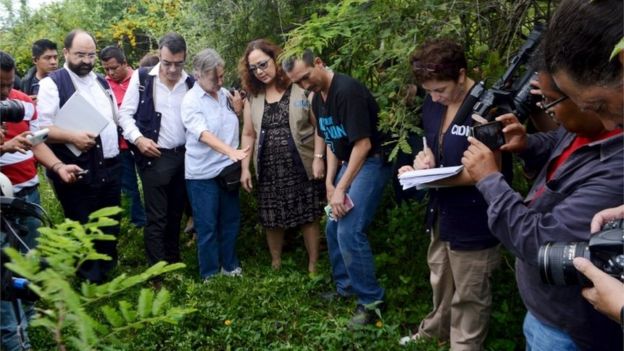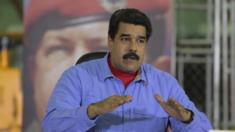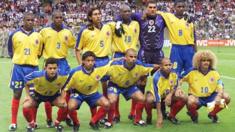Latin America & Caribbean
Mexico reopens investigation into 43 missing students
- 7 hours ago
- Latin America & Caribbean
 Reuters
Reuters
The Mexican authorities are reopening the investigation into last year's disappearance of 43 students in the state of Guerrero.
An international panel of experts had said the investigation was flawed.
Relatives of the students have disputed the government's account of what happened in September 2014.
The government says that police in the town of Iguala handed the students over to a drugs cartel who killed them and incinerated the bodies.
 Reuters
Reuters
The panel of experts, working for the Inter-American Commission on Human Rights, criticised the government's version of events.

The missing 43 at a glance
Who are they?
The 43 were all students at an all-male teacher training college in the town of Aytozinapa, in south-western Guerrero state. The college has a history of left-wing activism and the students regularly took part in protests.
What happened to them?
They disappeared from the nearby town of Iguala on the evening of 26 September 2014 amid a confrontation between municipal police and the students during which six people were killed.
Have any of them been found?
Independent forensic experts have matched charred bone fragments reportedly found at a rubbish dump near Iguala to Alexander Mora, one of the 43 missing students. They also say there is a high probability another set of remains could belong to Jhosivani Guerrero de la Cruz, another of the students. However, experts from the Inter-American Commission of Human Rights say the chain of evidence was broken and they could not be sure the bone fragments had been found at the dump.
What is the government's version of events?
According to the official report, the students were seized by corrupt municipal police officers who handed them over to members of a local drugs gang. The drugs gang mistook the students for members of a rival gang, killed them and burned their bodies at the dump before throwing their ashes into a nearby stream.
Why do the families not believe the official report?
They think officials have failed to investigate the role soldiers from a nearby barracks may have played in the students' disappearance. The government has refused to let the soldiers, who were in the area at the time of the disappearance, be questioned by anyone but government prosecutors. The families also point to the report by the Inter-American Commission on Human Rights which said that there was no evidence the bodies of the 43 were burned at the dump.

The panel of experts concluded that the government's account that the students were burnt beyond identification at a rubbish dump was physically impossible.
It said official reports appeared to downplay the presence of federal police and troops near the areas where the students were seized.
The experts said the army had refused to allow them to interview soldiers.
They came up with a list of 10 recommendations which the Mexican government has agreed to abide by.
In line with one of the recommendations, the search for the students will be relaunched, following outlines laid down by the experts and carried out in coordination with the victims' families.
The experts also want the government investigation to follow up other recommendations and to address other issues from the report.








No comments:
Post a Comment
Please leave a comment-- or suggestions, particularly of topics and places you'd like to see covered